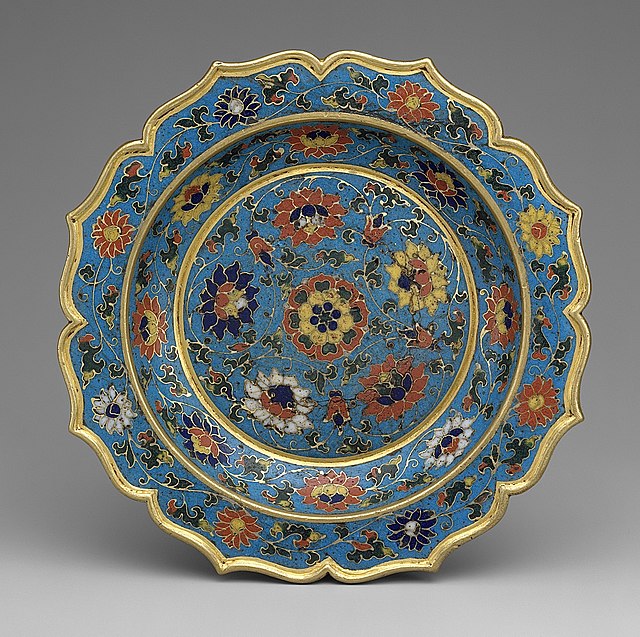Enamelled glass or painted glass is glass which has been decorated with vitreous enamel and then fired to fuse the glasses. It can produce brilliant and long-lasting colours, and be translucent or opaque. Unlike most methods of decorating glass, it allows painting using several colours, and along with glass engraving, has historically been the main technique used to create the full range of image types on glass.
The Reichsadlerhumpen, a glass with the double-headed eagle of the Holy Roman Empire, and the arms of the various territories on its wings, was a popular showpiece of enamelled glass in the German lands from the 16th century on. Dated 1743, this is a late example
The Luck of Edenhall, a 13th-century enamelled glass cup made in Syria or Egypt
Dish cold-painted on the underside with Mannerist nudes, Venice, after 1550, showing the severe losses of paint.
The Tutmose III jar, c. 1425 BC
Vitreous enamel, also called porcelain enamel, is a material made by fusing powdered glass to a substrate by firing, usually between 750 and 850 °C. The powder melts, flows, and then hardens to a smooth, durable vitreous coating. The word vitreous comes from the Latin vitreus, meaning "glassy".
Gothic châsse; 1185–1200; champlevé enamel over copper gilded; height: 17.7 cm (7.0 in), width: 17.4 cm (6.9 in), depth: 10.1 cm (4.0 in)
Chinese dish with scalloped rim, from the Ming dynasty; early 15th century; cloisonné enamel; height: 2.5 cm, diameter: 15.2 cm
Staffordshire Moorlands Pan, 2nd-century Roman Britain
Detail of painted Limoges enamel dish, mid-16th century, attributed to Jean de Court








